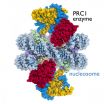"When governments sell the land, forests and other natural resources out from under the people who live there, local conflict becomes inevitable," said Andy White, coordinator of Rights and Resources Initiative (RRI), which commissioned the research. "All of these conflicts—and the financial risks that investors confront—are avoidable. The companies and governments implicated need to first fully respect and involve Indigenous Peoples and forest communities in all aspects of proposed investment, not as bystanders who can be pushed aside."
"Property rights in many emerging or frontier markets are dysfunctional to the point that ownership of land can be granted without the knowledge or consent of the people who live or depend on that land," said Leonardo Pradela of The Munden Project. "Generally tied to their land for many generations, these people have little interest in moving to urban areas and are practically impossible to relocate. Yet the conflicts generated by attempts to push them aside generate the worst kinds of financial risk: hidden and potentially ruinous."
In the analysis, Communities as Counterparties: Preliminary Review of Concessions and Conflict in Emerging and Frontier Markets, The Munden Project mapped out natural resource developments, or concessions, in eight emerging or frontier markets (EFMs): Brazil, Cambodia, Colombia, Indonesia, Liberia, Mozambique, Peru and the Philippines. These concessions almost always generated conflict with the people who live on the land that was targeted for development. The report examines 100 of these conflicts and looks for patterns in how and why these troubles emerge.
Several of the countries provided significant proportions of their land for natural resource extraction. More than 40 percent of Peru's land area, the host of the next round of international climate change negotiations, has been allocated for timber, mining and oil & gas drilling operations. Indonesia, at 30 percent, and Liberia, at 35 percent, have also conceded considerable parts of their territories for large-scale agriculture, timber and mining operations. As a point of reference, 30 percent of the United States would include all of the states east of the Mississippi River.
The Communities as Counterparties report was released in advance of RRI's 16th Dialogue on Forests, Governance and Climate Change titled, "Investments, Communities, and Climate Change: Risks and Opportunities." The event took place in Lima, Peru, on 30 October, 2014.
Financial Risk Begins at the Very Start
The Munden Project established three broad patterns of conflict in EMF concessions. The first pattern relates to timing, which shows that more than three quarters of all conflicts examined occur at the start of a project or when the project expands. Instead of involving Indigenous Peoples and local communities at the inception of a project that involves their land, governments and corporations reach out to them only after the plans have been drawn up, begetting conflict from the start.
An example of this pattern can be seen when the governments of Brazil and Peru agreed to build two dams on the Ene River, in the Peruvian Amazon, without the consent of the Ashaninka people who lived in the region. The dams, which would have displaced 8,000 to 10,000 people, triggered three years of protests and unrest before they were finally put on hold.
"In this day and age, it should come as no surprise that the only truly uninhabited place is Antarctica," said Richard Smith, executive director of Instituto del Bien Común (IBC), which cohosted the October 30th event. "You can find communities living almost everywhere else. It is no longer tolerable that communities are not consulted on investments involving their lands."
The Importance of Regulatory Compliance
The second pattern of conflict stems from the lack of compliance with the laws governing natural resource development. The analysis found a number of instances where environmental impacts involved the partial or complete destruction of forests, or impaired the local community's drinking water, the soil on their farms, or the air that they breathe. When communities and local NGOs uncover these impacts, they often challenge governments and private sector perpetrators to halt operations and remediate the problems.
In Santiago de Chuco, Peru, for example, local community organizations proved that a mine operated by Barrick Gold contaminated their drinking water supply, forcing the company to spend millions of dollars to address the problems. The advocates attracted attention at the federal level, and Barrick was forced to adjust the project's environmental impact assessment, causing operations to be suspended for eight months.
"Many of the emerging and frontier market economies in Southeast Asia, Latin America and Africa are thought to have rubber-stamp regulatory schemes," noted Pradela. "While many expect compliance with these schemes to be merely a formality, the reality on the ground is far different. Regardless of whether regulations are enforced, violations trigger local conflicts, which can bring a steep cost in operational delays and financial damages."
Negotiating in Good Faith Can Avoid Conflict
The third pattern involves what the United Nations defines as "Free, Prior, and Informed Consent" (or "FPIC"). Oftentimes, the rights of the people who live on the land are not taken seriously; these communities are either informed of the situation or negotiated with in bad faith, but never treated as full partners in the business transaction.
For example, the Merind people living in Indonesia's Merauke, West Papua region were not consulted when in 2010 the national government announced plans to transform two million hectares into agriculture and bio-fuel plantations. A subsidiary of Wilmar International, Asia's largest agriculture company, attempted to take advantage of this demarcation but without incorporating the Merind into the development plans. Local protests and international media coverage compelled Wilmar, at significant cost to its investors, to reduce the scale of the planned operations and relocate to different site.
"Natural resource concessions cannot be considered economic development when they fail to account for the economic rights of local inhabitants," concluded White. "True economic development empowers and enriches everyone involved. Only by securing the rights of Indigenous Peoples and local communities to their land can you ensure that they will share in prosperity when development visits their forests."
INFORMATION:
Rights and Resources Initiative (RRI) is a global coalition of 14 Partners and over 150 international, regional and community organizations advancing forest tenure, policy and market reforms. RRI leverages the strategic collaboration and investment of its Partners and Collaborators around the world by working together on research, advocacy, and convening strategic actors to catalyze change on the ground. RRI is coordinated by the Rights and Resources Group, a non-profit organization based in Washington, DC.
http://www.rightsandresources.org




